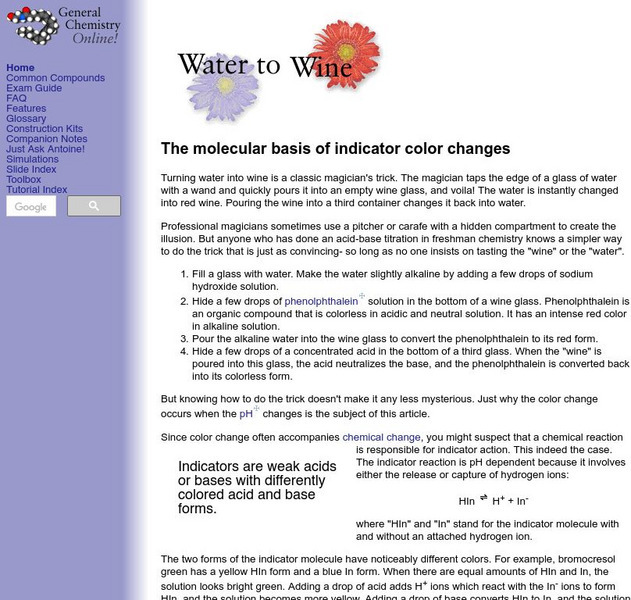Curated OER
Water Quality Monitoring
Learners study the water quality of a stream in their area, by measuring the temperature, pH, alkalinity and conductivity. They integrate biology with earth science when using the microscope to study the living organisms in the water.
Curated OER
Can You Catch the Water?
Students work together to construct a model of a water catchment basin. They survey water patterns and complete experiments to see where rain travels and collects. They discover how engineers design structures that help with drainage.
Curated OER
Teaching about Conductivity
Students explore conductivity and productivity in aquatic systems.
Curated OER
The Breathtaking Nature of the Urban Explosion, Part 4
High schoolers explore the respiratory system. They use a computer to monitor the respiratory rate of an individual. They determine residual oxygen levels in exhaled air. Students evaluate how internal 02 and C02 concentrations...
Quizlet
Quizlet: 5 Indicators of a Chemical Change
This website provides five terms about chemical change for you to practice. Audio is included for each term. This is a great study tool for test preparations.
CK-12 Foundation
Ck 12: Chemistry: Recognizing Chemical Reactions
[Free Registration/Login may be required to access all resource tools.] A tutorial full of explanations, videos, and review questions that covers chemical reaction and indicators of a chemical reaction.
American Chemical Society
Inquiry in Action: Color Changes With Acids and Bases
In this lab activity, students will learn how red cabbage can be used as an indicator of an acid or base by looking at its color changes.
Science Education Resource Center at Carleton College
Serc: Indicator Indi Gator
In this activity the students use critical thinking skills to see how liquids will change the color of an indicator.
American Chemical Society
Middle School Chemistry: Carbon Dioxide Can Make a Solution Acidic
Students explain that carbon dioxide from any source reacts chemically with water to form carbonic acid. They will also be able to use the color changes of universal indicator to monitor the changing pH of a solution during a chemical...
Hunkins Experiments
Hunkin's Experiments: Color
Hunkin's Experiments is a group of simple cartoon illustrations of scientific principles. Some would work well in the classroom, but others have little value beyond entertaining students. All of the projects are easy to do. This one...
ClassFlow
Class Flow: Heat
[Free Registration/Login Required] This flipchart investigates how heat is produced and the effects of heating and cooling and demonstrates how a change in temperature indicates a change in heat. Students will sequence objects according...
Frostburg State University
General Chemistry Online: Water to Wine
The molecular basis of indicator color changes. Includes Chime structures for the acid and base forms of phenolphthalein, methyl orange, red cabbage indicator, and cyanidin diglucoside.
Science Education Resource Center at Carleton College
Serc: Magic Paper
This lesson serves as an introduction to neutralization reactions. Students will observe that the goldenrod copy paper acts as an indicator changing colors and also that an acid can neutralize a base.
Other
The Science House: Invisible Ink
Guidelines for a simple lab demonstration using phenolphthalein, a chemical that changes color depending on whether it is in the presence of an acid or base.














